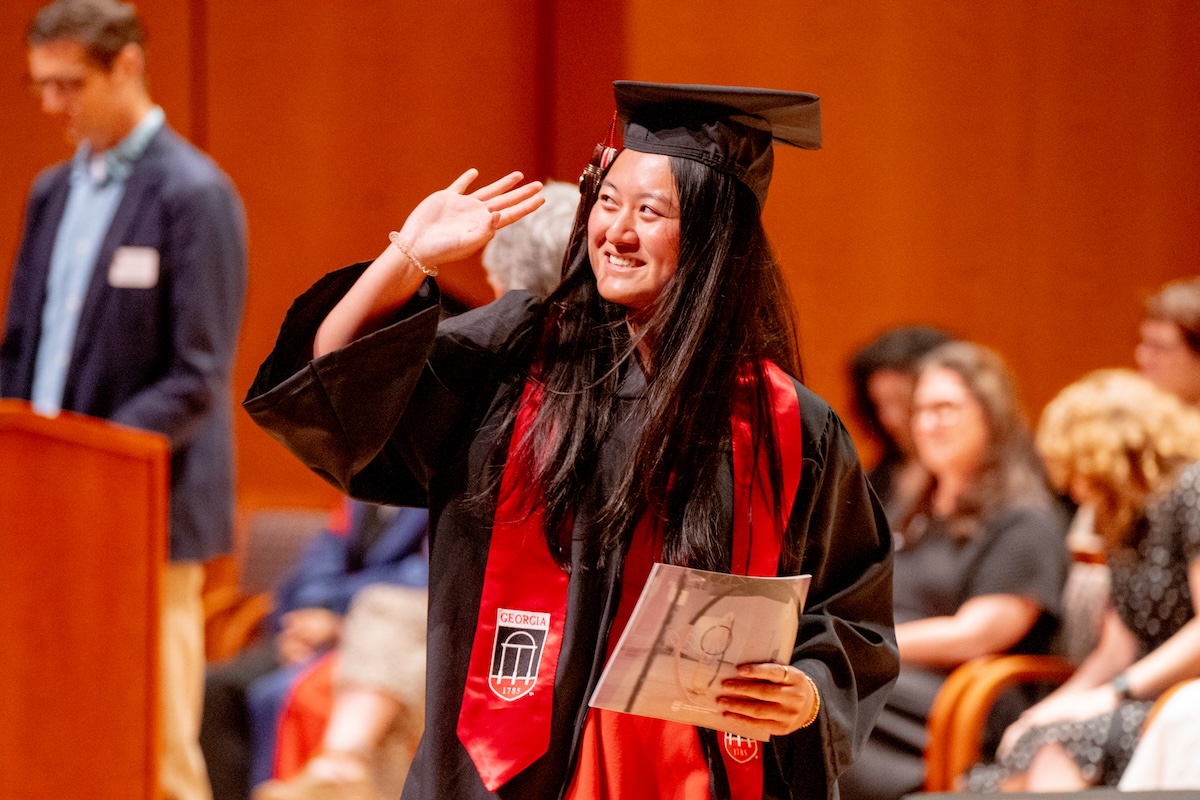Art History Lecture | Double UAB Symposium Run-through: Teddy Perkins, MA Candidate / Kelsey Siegert, MA Candidate
March 26th, 2024 at 5:00 pm

Date & Time
March 26th, 2024 at 5:00 pm
– March 26th, 2024 at 6:30 pm
Location
Lamar Dodd School of Art | N100
Type of Event
Faculty Research Lecture Series
Academic Area
Art History
Banner image: The Lady of Shalott (1888). Oil on canvas, 153 x 200 cm (60.2 x 78.7 in). Tate Britain, London
MA candidates Kelsey Siegert and Teddy Perkins will run through talks they will be giving at the upcoming 29th Annual University of Alabama-Birmingham/University of Alabama Graduate Symposium in Art History.
Lecture Abstracts
Kelsey Siegert, MA Candidate
“Meaning Left Afloat: Victorian Artistic Imaginings of Purity and Pollution in The Lady of Shalott”
Lord Alfred Tennyson’s The Lady of Shalott (1832) has long been understood as an allegory for the isolation of artistic life, and as such became a popular subject in nineteenth-century British painting. Moreover, feminist interventions into the poem and related artworks, have come to typify the sexual politics of Victorian England. I posit that along with this interpretation these works also speak to another of the century’s most pressing concerns: environmental decay. This presentation recontextualizes a series of paintings depicting Tennyson’s Lady of Shalott by John William Waterhouse (1849-1917) in relation to fears and attitudes around both industrialized pollution and the changing role of women in Victorian England. While Victorian femininity in the paintings of the Pre-Raphaelite Brotherhood and their followers has been well-studied, less noted is how Waterhouse’s renditions of The Lady of Shallot center issues of water pollution, canal building, and gendered labor through composition, locale, and iconography. The Victorian fixation on loss of innocence found fertile ground in the realities of environmental change and in social moeurs surrounding the “fallen woman,” and Tennyson’s titular heroine existed at the nexus of both crises. Using Marxist and ecofeminist methodologies, this project explores the ways in which these works can be understood in conversation with the shifting labor practices, sexual norms, and ecology of Victorian England.
Teddy Perkins, MA Candidate
“Botticelli’s Nastagio Panels and the Language of the Hunt”
In 1482/83, Sandro Botticelli (ca. 1445-1510) and his workshop completed four spalliera panels illustrating the eighth narrative from the fifth day of the Boccaccio’s Decameron for a commission from Lorenzo the Magnificent in celebration of Giannozzo Pucci’s marriage to Lucrezia Bini. The panels follow the story of a young woman who learns the futility and folly of withholding her affection from a young man who wishes to marry her. In his representation of this tale, Botticelli focuses on four moments in the Boccaccio story which emphasize the function of gender roles and marriage in the maintenance of the Florentine social order. The format of the panels evokes images of the hunt, a well-known tradition in quattrocento art. The use of the visual language of the hunt indicates that the message of the panels is not about marriage as a singular event, but rather as a social and political arrangement that scaffolds the stability of the family’s relationship to the patriciate. This paper examines how Botticelli’s animation of the Decameron story reinforces the propriety of male hegemony by constructing a sequence of scenes that alternately align with and contrast from artistic conventions of pursuit and capture. Specific attention is paid to the history of boar hunting and its meaning to Florentine elite in the quattrocento.


